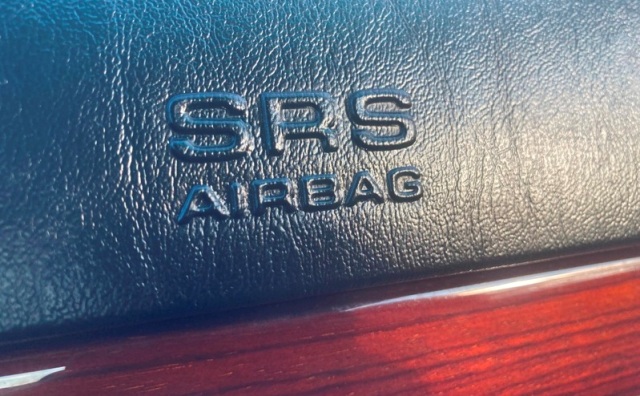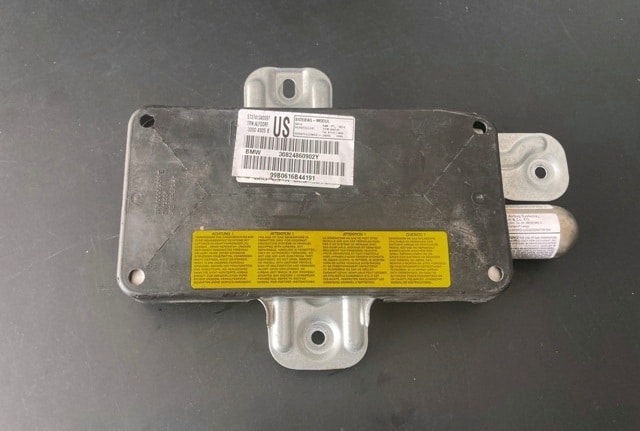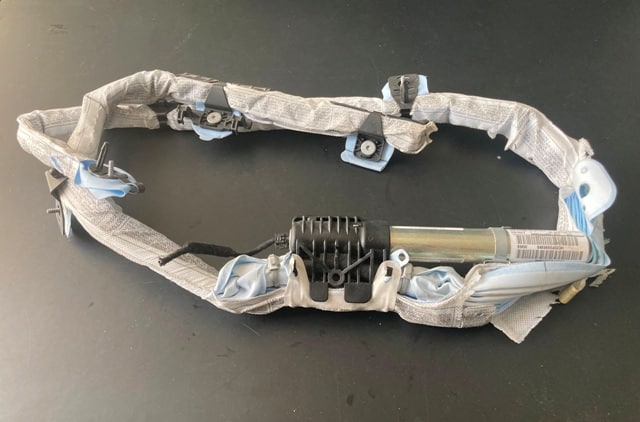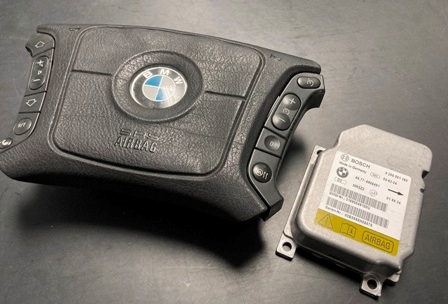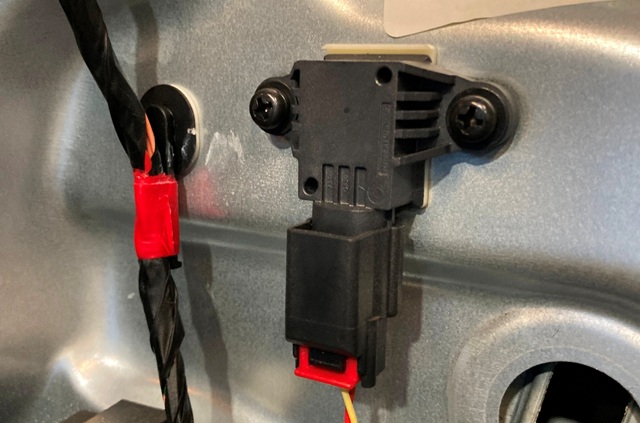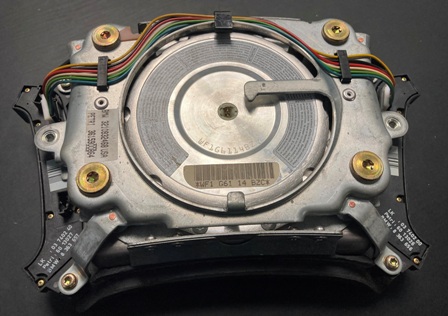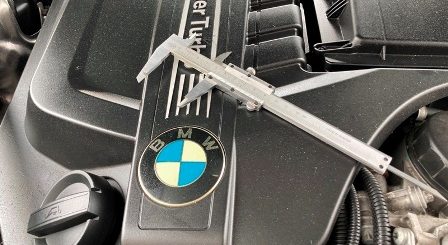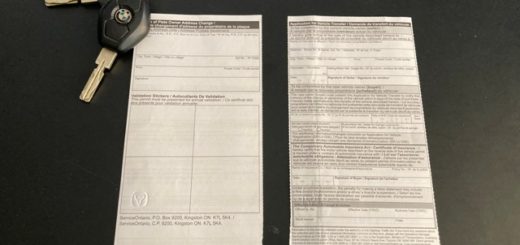How Air Bags Work
Air Bag History
Air Bags or Secondary Restraint System is a safety system on modern vehicles is designed to reduce injuries of occupants when vehicles are involved in accidents. First air bag systems date back to early 1970s.
Oldsmobile Toronado was first to introduce air bags on passenger side. General Motors installed first air bag systems for front vehicle occupants in 1976, driver and passenger airbags. AirBags or Secondary Restraint System became standard safety equipment for cars in 1999.
John Hetrick patented first cushion device in 1953. At the same time Walter Linderer patented a similar device in Germany. However, there was a problem. How do you deploy these cushioning devices in case of a collision?
(Air bags are part of Vehicle Safety Standard in Ontario. AirBags or SRS functionality is part of safety certification inspection.)
Technology at the time did not exist and there was nothing that could be used. Simple switches were not safe and could not be implemented as accidental triggering while driving will do more harm than good.
Answer came in 1968 when Allen Breed invented first air bag crash sensors. By 1970 all manufacturer were involved in research and development of air bag systems. Air bag systems became an integral part of vehicle safety systems and obligatory on all production cars.
More on air bag history and development from air bag sensor and air bag electronic units manufacturer Bosch.
Air Bag Locations
- Frontal Air Bags: drivers air bag is installed on center of steering wheel while passenger air bag is installed on car dashboard, in front of passenger seat. Frontal air bags prevent driver and passenger injuries by reducing extensive kinetic forward or side movements in case of an accident. Frontal air bags have save countless lives by reducing driver and passenger injuries when involved in frontal collisions.
- Side Air Bags: Side air bags prevent or reduce injuries in case of a side accident. Side air bags are installed on sides of car seats and will deploy when side impacts occurs. These air bags are especially important on small or compact cars.
- By its nature, a small vehicle is more dangerous to its occupants than a large one in case of collision or rollover. Side air bags improve safety rating in subcompact cars and decrease chances of severe injuries during side impacts or collisions.
Air bag system failure will trigger an Air Bag Warning Light.
Curtain Air bags
Curtain air bags are mounted on vehicle roof and fold down to cover vehicle windows. These air bags reduce head injuries in case of a side accident or vehicle roll over situation.
- SUVs and higher from ground vehicles in general have a high center of gravity, increasing chances of a roll over. Curtain air bags are designed to remain inflated for longer periods of time decreasing injuries to passengers.
- Knee Air bags: Knee air bags will deploy to prevent injuries to car occupants legs in frontal accidents. However, there is some controversy related to knee air bags effectiveness and safety. Some studies have shown knee air bags did not reduce injuries and in certain situations even increased leg injuries.Based on IIHS research, knee airbags showed little to no effect on reducing injuries and in same cases even escalated risk of injuries.
How Air Bags Work
Airbags slow body forward movement in case of a sudden stop, or a collision. Airbag system works in conjunction with seat belts to prevent injuries by absorbing impact caused by kinetic energy in a car accident.
Air bag system has three main components: AirBag, Sensor/Control system and Inflator system.
- Air Bag: is made of nylon material and designed to do the “the cushioning”. It prevents driver and passenger injuries from contact with windshield or dashboard. Air bag is inflated within 0.3 seconds of impact and deflated within a second of inflation thereafter.
- Air bag control system: has an array of sensors located at different locations around the car and SRS Control Unit Module. When an accident happens, sensors will send information in milliseconds to air bag control unit which in turn will activate airbags. Air bag system will not deploy in case of minor accidents when injuries are deemed unlikely.
- Inflation system: is made of explosives. Solid state explosives will produce explosive gases which will inflate air bags in a fraction of a second. Chemical used is Sodium Azide. Apart from air bag utilization, Sodium Azide is used to produce detonators and other types of explosives. Nitrogen gas created by explosion is directed to air bag inflation bag inflating it in a very short period of time, 0.3 seconds or less.
AirBag functionality and operation by Insurance Institute for Highway Safety.
How Air Bags Work: Dual Air Bags
Dual Air Bag is an air bag system which has more than one explosive stage. Dual air bags operate in two stages. Air bag deployment force is calculated based on accident severity.
However, air bags are a supplemental secondary restraint system and not a substitute for seat belts (primary restraint system). Number of airbags is not the only factor to decide how safe a vehicle is. General passive and active safety factors are also taken in consideration.
As an example, safety cage rigidity, crash frontal structure, frontal early warning systems are extra safety features.
Airbag system as explained by National Highway Safety Administration.
Air Bag Safety Children
Air bags are dangerous to children below a certain age. While air bags are a very reliable safety system in general, it might increase risk for children under age of 12 years old sitting in front seats.
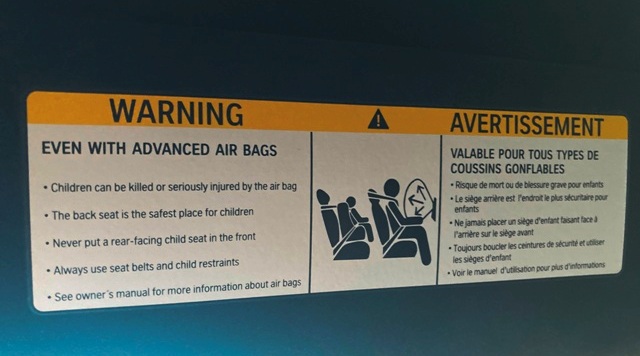
Children under 12 years old should always ride in back seats.
Air bags and children safety as per Transport Canada.
(If you are also looking for a fast and easy solution to sell your car, more here on “How To Sell Your Car Fast In Ontario” )
Comments: If you have any questions related to this post or Used Car Toronto in general, don’t hesitate to use comment section below.


